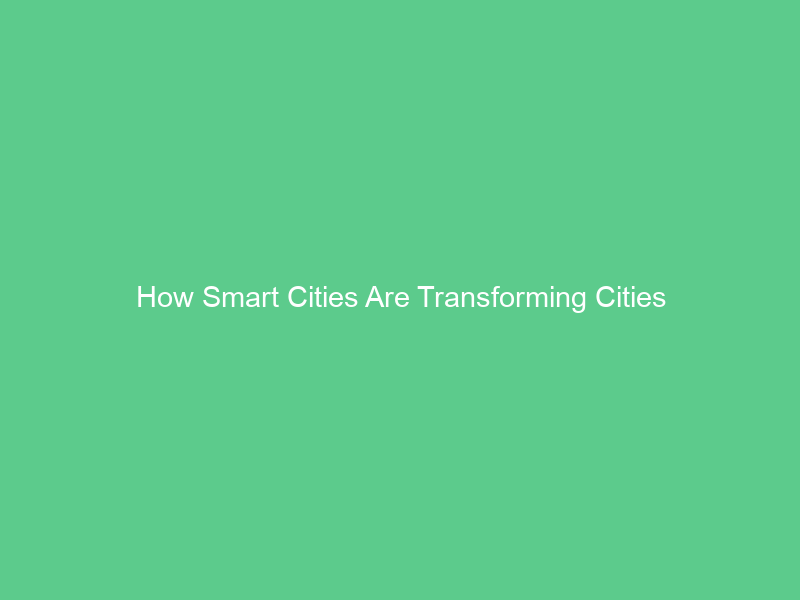City managers face the difficult challenge of balancing three fundamental concerns – maintaining high quality of life, stimulating economic development and guaranteeing environmental sustainability.
Smart technology is helping cities address these obstacles.
Streetlights will turn on and off automatically, waste will be recycled, and transportation services such as car- and ride-sharing will be offered.
1. Smart Transportation
Data collection and connectivity technologies lie at the core of smart city initiatives, helping cities improve urban planning and deployment of city services such as waste management or public transport while cutting costs and carbon emissions.
One of the most visible applications is smart transportation system that improves commuter experiences by decreasing traffic congestion, improving air quality and increasing efficiency. Cities that employ smart-mobility applications have reported cutting commuting times by as much as 15% on average.
City officials typically work backwards from desired outcomes to identify technologies that will help achieve them, with many smart city projects starting with a pilot phase to assess feasibility. Furthermore, they may use sensors for air quality monitoring or weather conditions analysis.
2. Smart Energy
Smart energy uses renewable, reusable and cleaner sources of power for daily life needs.
Smart energy systems allow you to closely manage and track the energy use in your home or business, from controlling appliances that drain energy quickly, tracking usage at circuit level, and providing users with visual representations of how much they’ve consumed over time.
Smart Energy builds upon the technology found in smart homes by expanding its functionality to major energy-using systems in buildings such as heating, cooling and plug loads such as electric vehicles or pool pumps. Furthermore, this type of smart energy integration with renewable sources like solar or wind allows consumers to manage both electricity production and consumption themselves.
3. Smart Health
The healthcare sector is currently undergoing a dramatic transformation that promises to transform its future positively. Care delivery is shifting away from disease-centered approaches towards patient-centric approaches and treatment oriented medicine toward preventive medicine, with both of these factors expected to play a part in shaping its future success.
One of the most significant advances is remote patient-monitoring systems that can quickly identify medical emergencies and alert medical practitioners, potentially saving lives by speeding up response times to emergency situations. Furthermore, such systems save both patients and doctors money by decreasing hospital visits or unnecessary tests such as bloodwork or X-rays.
Note that it is not necessary for city governments to fund and operate all smart infrastructure systems and services (Exhibit 1) independently – especially with respect to Smart Health projects.
4. Smart Education
As smart cities leverage IoT devices to monitor security, power grids, and traffic systems, similarly a smart education system can leverage networked technology to deliver integrated services that improve citizens’ quality of life – such as online retraining or ecodesign promotion to promoting efficient construction projects or supporting local businesses.
These initiatives rely heavily on automated technology, data analytics and IoT sensors; yet can often be implemented at a fraction of the cost and maintenance expenses associated with traditional infrastructure solutions. A key consideration here is making data available via an open portal where residents can access it directly; perhaps an app which automatically dims streetlights or lets users monitor energy consumption could do the trick.
5. Smart Security
Real-time data collection technology has become the cornerstone of smart city systems, enabling better city planning, efficiency and increased quality of life for residents.
Many technologies today rely on automation, connectivity to the internet and what’s known as the Internet of Things (IoT). Examples include streetlights that turn off automatically as it gets dark; smart water meters that wirelessly send power usage rates; traffic management solutions that reduce infrastructure maintenance costs through adaptive lighting or signal preemption for emergency vehicles; or traffic management solutions which offer adaptive lighting or preemption that reduce costs associated with emergency vehicle travel.
However, for these technology platforms to be truly successful in city initiatives and allow for public participation and transparency.

